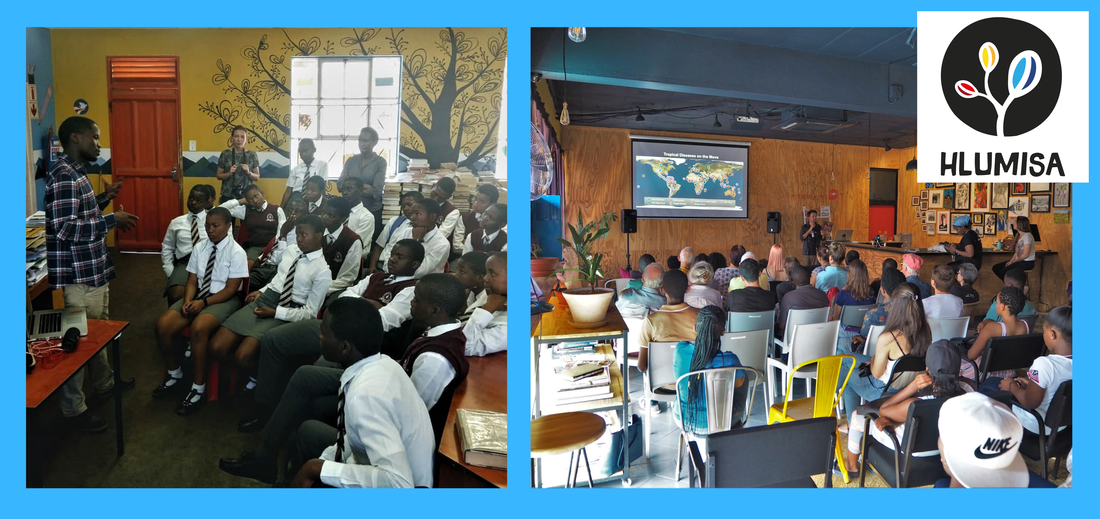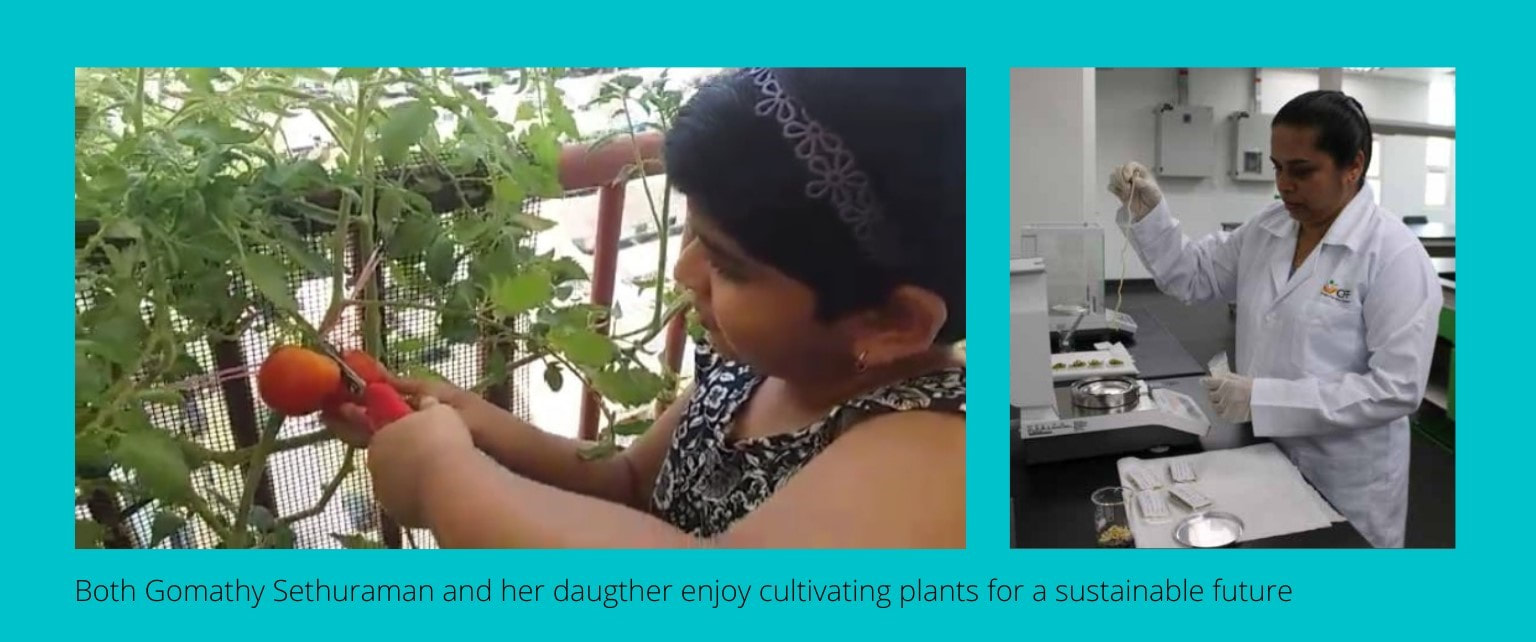|
COP 26 brought global nations together with the aim of slowing down climate change by mid-century, but is the 1.5 still alive, or is it on life support? David Attenborough spoke confidently and passionately from the podium at COP 26 in Glasgow. He made many strong and insightful remarks, but he left us with a clear intention for when the pageantry was over - will the measure of the concentration of carbon in our atmosphere rise or fall after the summit? The answer is uncertain, but it’s clear that industries can do more to help. COP 26 Agreements After two weeks of presentations and discussions, the curtain finally closed on the UN’s annual climate change summit in Glasgow. So what was the outcome? According to some analysts, activists, and commentators, COP 26 didn’t do nearly enough, but it did agree on some things. According to COP 26 president, Alok Sharma, the summit succeeded in affirming the Paris Agreement’s aim to limit global temperature rises to 1.5°C by mid-century. Successes included talks on limiting coal usage for the first time and rules to govern cross-border carbon credits. COP 26 Failures Despite agreements made in the Glasgow Climate Pact, the summit didn’t go far enough according to some analysts. Alok Sharma called for “phasing out” of coal power by mid-century - at 46% coal is the biggest contributor to anthropogenic climate change, but calls failed. Instead, negotiators agreed to “phase-down” coal usage, but developed nations like India and China will continue to use it in the 2040s. There were also failures with regards to climate justice - the adaptation fund received support, but the funding levels remain woefully inadequate. Action is Needed Promises, promises, promises. Over one hundred nations promised to cut their methane output by 30% by 2030, and 130 nations possessing 90% of global forests promised to reverse deforestation. To find out what your business can actively do, visit Net-Zero at Surefoot-effect. The central problem with COP 26 was not necessarily the sentiment, although some say there was more greenwashing than activism on the part of governments; the problem was (and still is) accountability - will nations act on the commitments they have failed to keep at previous COPs? Future Prospects At present, there is no legal framework for accountability on climate change, which might change when the water starts to rise, but for now, the pledges are based solely on goodwill and cultural pressure. It seems nations are beginning to wake up, but there’s much work to be done. Some commentators point to the lack of young people and women in future conversations, for instance. Still, there is room for optimism. As climate activist Greta Thunberg said “... the real work continues outside these halls. And, we will never give up, ever.” A popular sentiment. The Surefoot Effect It’s no longer possible to ignore the effects of climate change, and your business has a role to play in turning the tide. It’s time to start learning about Net-Zero and building responsibility into your enterprise. If you’re interested in making your business more planet-friendly, visit the Surefoot-Effect and take part in climate change training, mentoring, courses and workshops. By James Bollen James Bollen is a digital writer and content creator. He writes articles and blogs in a wide range of niches including business and technology but has a particular interest in conscious living practices, nature appreciation, and creative pursuits. He lives in Glasgow with his partner and sibling cats, Hansel and Gretel.
1 Comment
In Eswatini, the Southern African country formerly known as Swaziland until 2018, a new movement is taking form to engage young people in a broad range of climate change actions. In a country where flights and overconsumption aren’t options for most people, worldwide climate advice needs to be replaced with initiatives rooted in local reality. Even the Eswatini average carbon footprint is low, there are still actions to take to mitigate climate change effects. Local understanding and education, improvement of infrastructure and engagement of the young people which make up a large part of the country’s population, can support Eswatini towards a sustainable future. As places and people are globally interlinked, we get valuable insight into the state of the world when listening to voices from Eswatini. Supporting the youth in taking action At Surefoot we have talked with Dane Armstrong and Tamika Du-Pont from Eswatini, who are on the steering committee of a youth led climate change network called Hlumisa (which translates ‘to make grow’ or ‘to sprout’). They are also engaged in the Eswatini Climate Coalition which offers a platform for engaging in climate change news and projects around climate justice. This is one of a series where we are speaking with people from organisations around the world, to get first-hand insight into climate change and environmentally friendly actions. Dane, who is an artist who also works in climate adaptation, policy and food systems, explains the need to engage young people in climate change actions, “There is a gap between the governmental goals and citizens participation. With our platform we share news and information, reach out to schools, create workshops, organise marches, and use the creative arts to raise awareness around climate change.” Like other places on the planet, the Covid-pandemic has put many activities on hold. Since there has been a shift to online activities, inequality has become more visible. Internet connections are expensive for many people, and once connected the internet is not always reliable. Their work with high school students aged 15 - 30 years old, including a festival and the pilot of a climate platform, was postponed due to the pandemic, but the activities are again going forward as they look to rebuild and forge ahead. Time for change With a background in environmental science and concern of the social aspects of the environment, Tamika points out the importance of forming a community where different skills come into play, whether it’s about saving energy or creating art. “A small wave of climate change awareness is here, but many more need to know about the consequences and initiatives to build resilience. It should be followed up with governmental actions and rebuilding of the infrastructure. There is a call for optimisation of the national transportation system within the small sized country. We need for example cycle lanes, and a more reliable public transportation system to allow people to participate in greener and more sustainable means of living,” explains Tamika. Recycling is a simple example of a weak spot in the infrastructure. Dane mentions the lack of information and access to recycling (which does exist as an option), even to people who have the means and desire to participate. There are further steps to take when encouraging change on a personal level. Reducing meat towards a more plant-based diet is a challenge due to cultural habits, and there is not much information in circulation about the environmental benefits. Also, embracing agroecological food systems, promoting organic gardens and buying locally produced food and other products would help mitigate the climate change effect. “People should be exposed and encouraged to adopt these possibilities,” states Tamika. The storm to initiate change Heavy rain, extreme storms, heat waves, drought and high temperature in October, which are normally experienced in December, are some of the potential climate change effects already being felt in Eswatini. This is on the back of the extreme drought that was felt in the region between 2015/2016, which thrust climate change into everyone's minds due to the huge personal effect this had on everyone’s lives. Roads, agriculture and livestock are constantly at risk or affected. “Last weekend almost everyone in my neighbourhood was on their roof fixing holes after a heavy rain and hailstorm,” informs Tamika. In a time where it’s difficult to predict what will happen in the wake of climate change, uncertainty has become a weighty actor. “People can see that climate change is happening, but often it has been forgotten on the other side of the storm. But now, the bubble starts to burst,” says Dane and explains about these early days of awareness and action. Discussions, debates and aiming for shared solutions between citizens and the city councils are wanted. When climate change impacts strike, people are often left alone to deal with the effects, for example repairing their houses. If support appears in a sudden climate change disaster, most often it is short-term oriented, like the provision of food supplies. This is important, but there is a demand for a shift in political attitude towards climate change challenges. Empowering agencies already established in the local areas would strengthen the forces already there to meet emergency situations. Furthermore, viewing solutions to climate change impacts not as an expense but as an investment in long-term sustainable solutions would support the future of the country and its people. If such initiatives become part of supporting Africa as a whole, this will make the continent stronger. And again, on an even bigger scale, if we at a global level are concerned about what is happening to various places on the planet, we will all learn more about climate change and what it takes to deal with it. Dane mentions Madagascar as a place with hardly any attention from the global society. The fourth largest island in the world, with animals and plants found nowhere else on the planet, is currently facing a devastating dry season which has left people in starvation. The UN predicts it might turn into the world’s first climate change famine[1]. Sharing is caring It might be a clichéd saying, but nevertheless sharing is caring. And shared communities are also what the young people want to be engaged in, when asking Tamika and Dane what the youth in Eswatini prefer among their offered activities. Platforms for sharing are essential for young people worldwide, and Eswatini is no exception - it is fundamental for change. Space to share knowledge, skills, experience, creative work and ideas. A place which invites young people to think and to be listened to, to be able to deal with challenges in their part of the world, and to be a part of the global community. By Gazelle Buchholtz [1] https://news.un.org/en/story/2021/10/1103712 If you like to follow the work of Tamika and Dane see more here:
www.eswatiniclimate.org, [email protected] Twitter: @ClimateEswatini Hlumisa email: [email protected] Tamika Du-Pont linkedin, Personal email: [email protected] Instagram: https://www.instagram.com/tamikadupont/ One of the primary goals for Crops For the Future Research Centre[i] (CFFRC) is to secure a greater role for underutilised crops in global agriculture, especially in developing regions of the world. CFFRC's function includes global campaigning as well as the collection and distribution of information on underutilised crops for food and non-food applications. The organisation has developed an online tool called CropBASE, a data-to-decision solution that focuses on agricultural diversification. This is free for farmers, researchers and everyone with an interest in sustainable agriculture. The changing political scene in Malaysia over the last few years has caused instability in the organisation’s work. Established in 2014, CFFRC closed its doors in May 2020 after the Government of Malaysia’s agreed-upon period of funding support came to an end. The closure has resulted in the move of CFFRC to the UK, now known as CFFUK where it continues to work for a worldwide varied supply of food sources to benefit both people and the planet. Biodiversity incorporated in agriculture At Surefoot we have talked with PhD student Gomathy Sethuraman at the University of Malaya, Kuala Lumpur. The online conversation is one of a series where we speak with people from organisations around the world, to get first-hand insight into climate change and environmentally friendly actions. Gomathy Sethuraman has worked for about 15 years in various laboratory settings and joined the Research Division at CFFRC in 2015 as the Technical Support Manager. Her main tasks were to provide technical support in equipment setup and usage, sample analysis and data collection, including report writing related to crop studies & nutrition profiling. “Despite there being approximately 30,000 known plant species documented for human use, less than 20 species provide the world’s food and only four major crops namely wheat, corn, rice and soybean account for the majority of the world’s food production. There are at least 7000 plant species identified as food sources that remain underutilised or lesser-known; these crops are very rich in vitamins and nutrients. Whilst bringing new flavours to the meals, they also have the potential to improve both food and nutrition security. As knowledge is scarce on these underutilised crops it presents a challenge to incorporate these lesser-known crops into the agriculture sector,” says Gomathy. Together with colleagues she has published a few papers on some of these underutilised crops found in Malaysia. One such crop is sacha inchi[ii] which is native to the Amazon rainforest but can now be found in other parts of the world including Malaysia. Its high levels of fatty acids (Omega 3, 6 and 9) and easily digestible protein are not common in other vegetable oil. The team is pleased to find out that there are farmers around Malaysia who have started working on this crop. Hopefully, this will lead to further collating of information and dissemination to a wider audience with the hope that more farmers will explore the underutilised crop that has valuable traits not only to improve diversity in agriculture but also to mitigate climate change and reduce the use of pesticide and fertiliser that contributes to the carbon footprint of agriculture. Positive effects of more local food “The Malaysian government’s goal of being carbon neutral in 2050, I believe is a difficult target to achieve as a large portion of the country’s food is being imported from all over the world despite it being an agricultural country. More varied and locally produced food would help to decrease carbon emissions and the negative climate effect,” says Gomathy and she elaborates on climate change in Malaysia. Monsoon is a typical recurring annual event, but now it causes more flooding than usual. Water levels can at times reach the heights of house roofs. Likewise, extreme heat is a more frequent phenomenon. The average temperature rise of 1 - 2°C doesn’t seem much on the skin of our body, but plants experience it differently. The flowering of some plants is affected by the temperature change, which directly affects the yield production. With a number of changes of government in Malaysia over the past several years, Gomathy calls out for stability for the support of environmentally friendly initiatives which aim to ease the impacts of climate change, regardless of changes in the political agenda. Creating value out of challenges One positive ‘side-effect’ of moving Crops For the Future to the UK, is that now the organisation has established new partnerships with other countries and has gained international recognition. Gomathy underlines the persistent effort of the CEO at Crops For the Future, Sayed Nader Azam-Ali. His book, ‘The Ninth Revolution, Transforming Food Systems For Good’ was released earlier this year, and the organisation continues to promote the Global Action Plan for Agricultural Diversification (GAPAD) through its participation in the AIRCA consortium and work with a range of partners. CFFUK is also looking into expanding its approach globally and currently working towards establishing in South Africa with hosting by the University of Kwa-Zulu Natal, Pietermaritzburg and a preliminary exploration underway in Australia with the goal to create regional centres with complementary expertise that can contribute to a variety of food system research projects throughout the world. On the question of how to support underutilised crop production, Gomathy points out knowledge sharing as an important initiative. Knowledge is an important tool for any form of advancement, and it should start in the family. Some of these crops were grown by our ancestors and they are lost in the transition of time. Gomathy teaches her daughters of seven and twelve years old who take part in growing edible plants like long beans, tomatoes, okra and some leafy vegetables in their home in Selangor. She iterates, whenever we buy food, we ask questions like, “Where is this food produced, is it coming from a local farm or has it taken a flight to come to our shelves, has there been the use of pesticides, how much has it been processed, and what kind of packaging material is used? Could there be an option for locally fresh, less processed food, with a minimum wrapping be available as a substitute?” When Gomathy participated in Carbon Conversations conducted by Surefoot in 2009, she was surprised about the carbon footprint of food transported by plane, “It is not enough to go for vegetables and fruits, the footprint of transport is a significant factor to take into consideration when assessing the impact of our food. Educational programmes available to all would be a great help for people to find out how to choose climate-friendly food sources.” Gomathy also highlights that it does not help the situation by pointing fingers and judging people for their eating habits, especially those who consume meat or highly processed food products. Instead, we can inspire and share the knowledge towards a varied food option that is good for us and the planet since there are more than 7000 crops documented for food sources.
By Gazelle Buchholtz For more information: [i] Gregory, P. J.; Mayes, S.; Hui, C. H.; Jahanshiri, E.; Julkifle, A.; Kuppusamy, G.; Kuan, H. W.; Lin, T. X.; Massawe, F.; Suhairi, T. A. S. T. M.; Azam-Ali, S. N. Crops For the Future (CFF): An Overview of Research Efforts in the Adoption of Underutilised Species. Planta 2019, 250 (3), 979–988. Overview of CFFRC, Malaysia [ii] Sethuraman, G.; Nizar, N. M. M.; Muhamad, F. N.; Gregory, P. J.; Jahanshiri, E.; Azam-Ali, S. Nutrition Composition of Sacha Inchi (Plukenetia Volubikis L.). International Journal of Research and Scientific Innovation (IJRSI) 2020, 7 (9), 271–277. By Euri Bartlome Vidal, Associate at The Surefoot Effect
As a host of the COP26 and a leading nation in the transition to a low carbon society and a net zero nation by 2045, the Scottish government asks the following questions:
To make recommendations to Ministers on how Scotland’s net-zero transition should be achieved, a Citizens’ Assembly on climate change was convened. Grounded in Scotland's Climate Change Act (2019), Scotland's Climate Assembly brought over 100 people together from all walks of life to learn about, deliberate and make recommendations to answer: "How should Scotland change to tackle the climate emergency in an effective and fair way?" Each Assembly member identified the top 10 statements which were most important to them. These were consolidated and ordered based on the statements which were prioritised most by members. The two most important recommendations regarding fairness to tackle the climate emergency, prioritised by over 70% of Assembly members were: 1) Take into account the needs of different communities across Scotland, recognising that there is not a ‘one size fits all’ solution. 2) Target the highest emitters so that organisations and individuals with the highest carbon footprint have to make the biggest changes. You can access the full document here: www.climateassembly.scot/interim-report |
�
AboutHere’s a collection of some of our articles which have been in our newsletters or published elsewhere.
Archives
May 2024
|
Sign up TO SUREFOOT NEWS >>The Surefoot Effect equips people, communities and organisations with skills for sustainability and resilience.
|




 RSS Feed
RSS Feed




